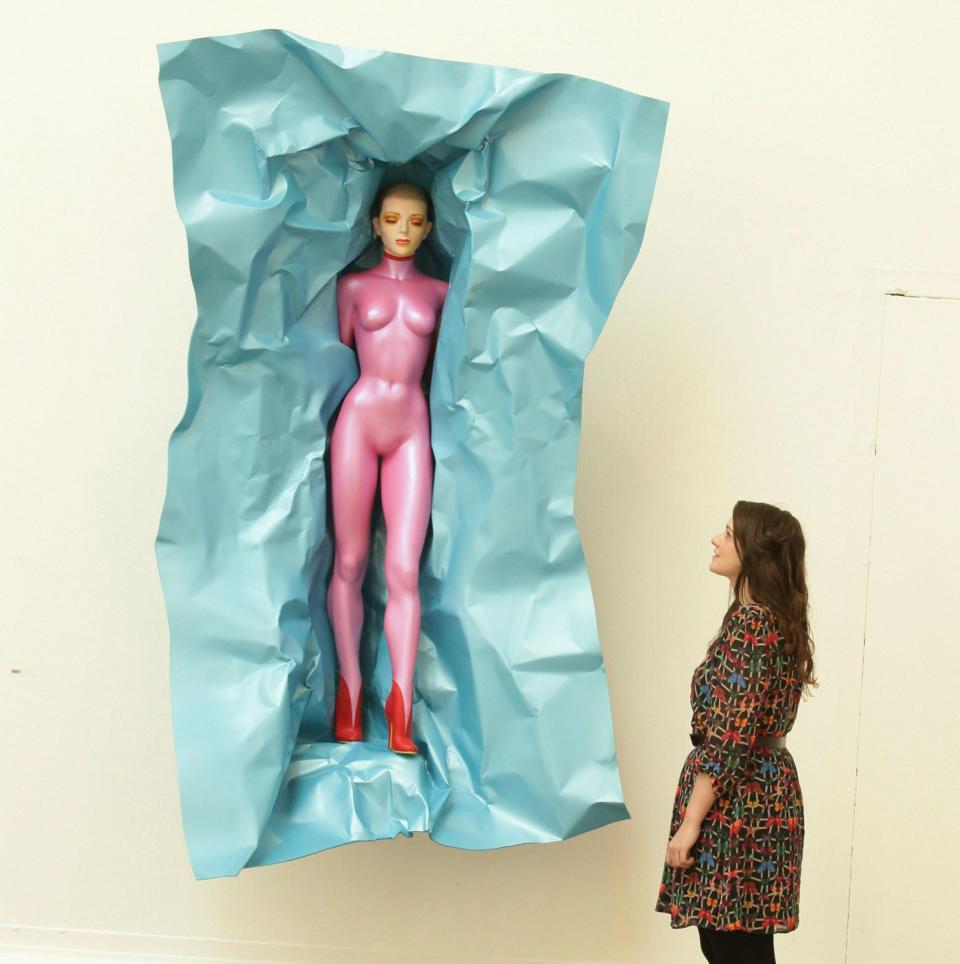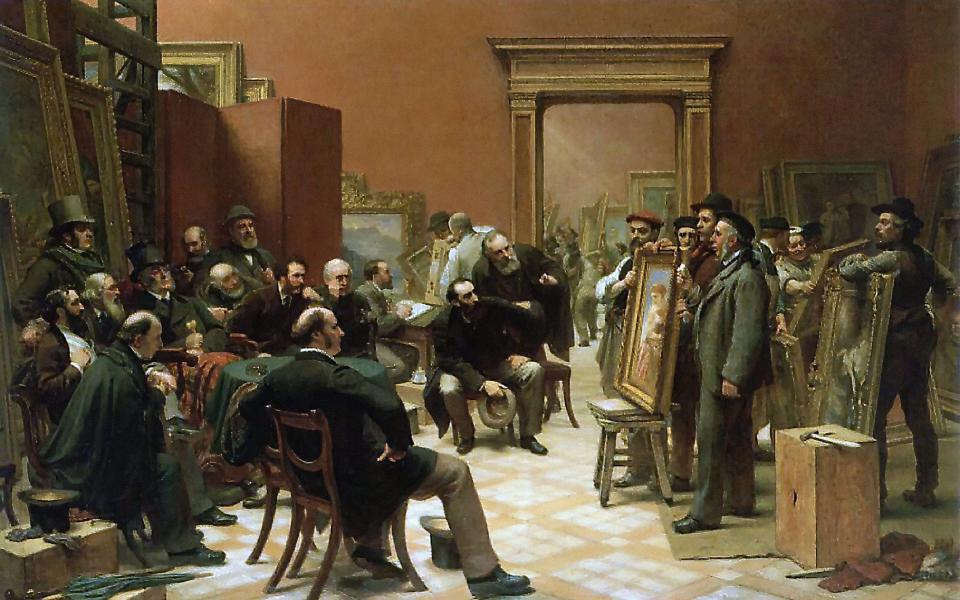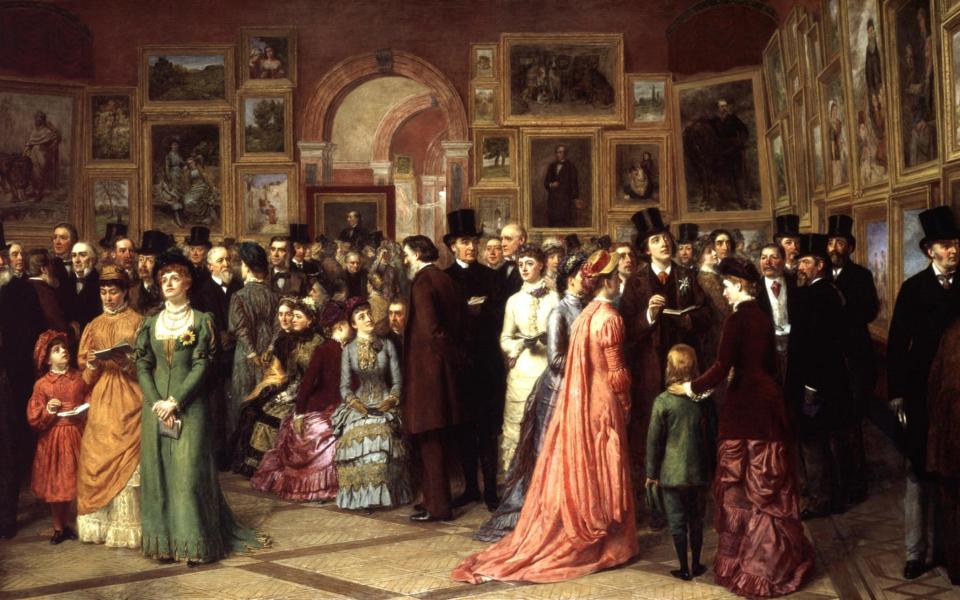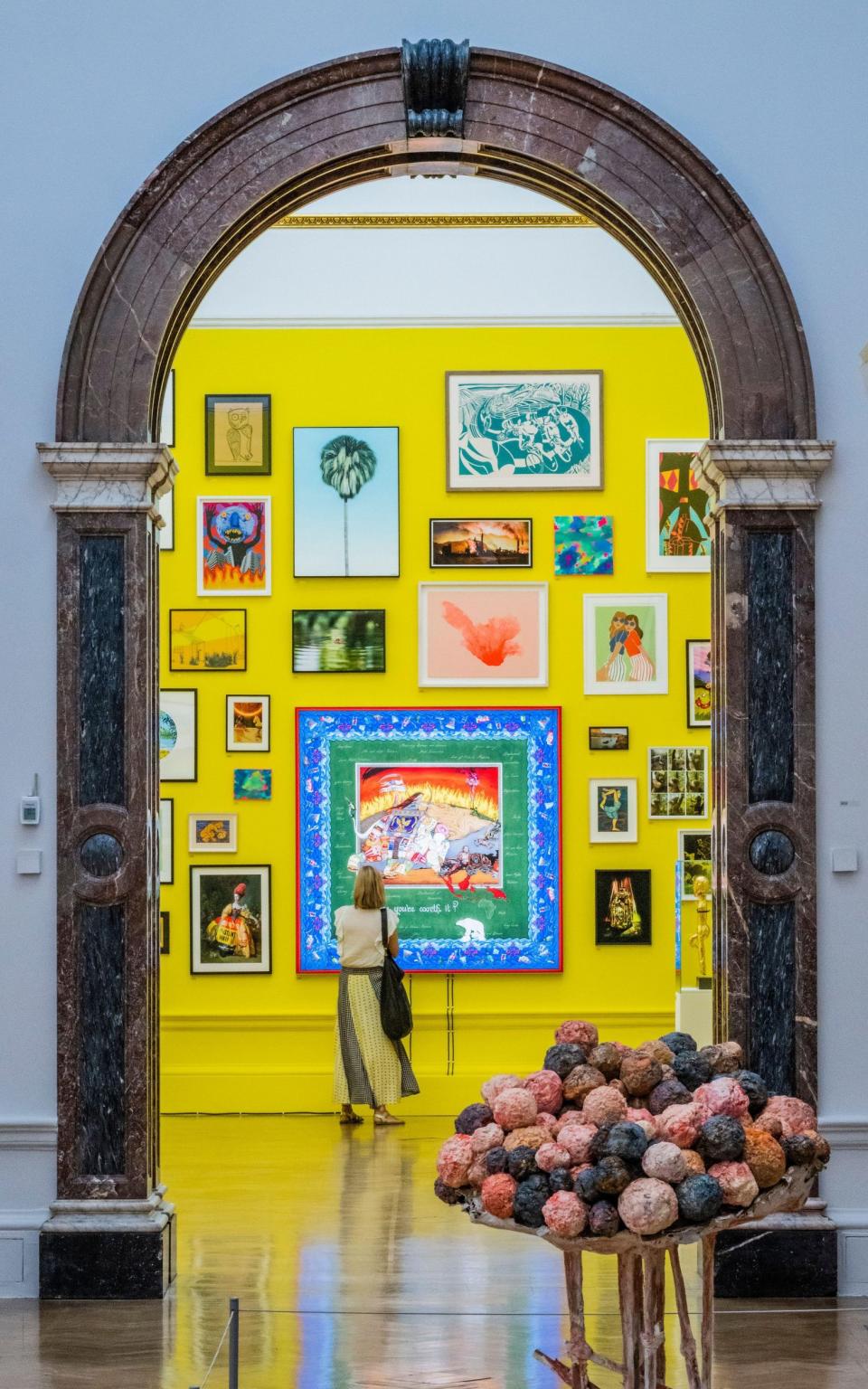It’s the most hated exhibition in Britain – and the antidote to a self-obsessed art world

It’s time, once again, for the Summer Exhibition, the Royal Academy’s enduringly unstable mix of works by professional artists (the Academy’s 100 or so academicians) and hundreds more hopeful amateurs. Selected from open submission and by a changing committee, each year it results in more than 1,000 works hung across every available wall: cat paintings, hand-me-down abstractions 50 years out of date, a bust of Elizabeth II made from beads. There are few exhibitions quite like it.
After more than two-and-a-half centuries, it has become an institution – despite the best efforts of its many critics. Here’s the Telegraph’s own Alastair Sooke, writing in 2021 that it is “as indestructible as a cockroach… groaning with banal, random pictures of flowers, gardens, animals, and a smattering of antiquated Venetian views”. Of 2020, Cal Revely-Calder could only conclude that “the Summer Exhibition is not a serious show. Sooner rather than later, it should end.”
Why is such a jolly event reliably guaranteed to provoke such hostile responses? What’s not to like about a big day out for the amateurs who would otherwise never get near a major national public gallery?
The art world can have a mixed-up attitude to “outsiders”, and how far they should be allowed into its exclusive institutions. But letting in “ordinary people” and their untutored, self-taught forms of artmaking, rather than keeping art galleries the preserve of insiders, is the reason for holding an open-submission exhibition in the first place, and the bemused horror of encountering its worst offenders goes with the territory.
Best of all, it’s a leveller – seeing artworks by unknowns rub shoulders with household names pits gut reaction against checking the wall label to see if it’s by a “proper” artist. Was that pearl-pink femme fatale emerging from an enormous sweet wrapper (Allen Jones’s contribution in 2011) much better than the stretched Pink Panther weaving through a canvas, in 2018? And was that better than the portrait of Nigel Farage, right next to it?

But while there’s the exhibition’s openness to all, this is balanced by the privilege it accords the Academy’s own members – from Anish Kapoor to David Hockney – who get pride of place in the galleries and are allowed to show more works. The RA is, after all, made up of practising artists elected by their peers, and the Summer Exhibition assumes that these RAs represent the best of British art.
That’s the contradiction. On the one hand, you’re dealing with a throng of works by hopefuls that don’t seem to meet the critics’ minimum standards; and on the other, the possibly gratuitous showcasing of a group of established artists who are only there because they belong to what amounts to (if you’re being cynical) an exclusive club, many of whom (if you’re being very cynical) are given the chance to show what might be mediocre work; the has-beens and the never-will-bes, side by side at last.
But in today’s art world – in which commercial dealers and museum curators obsessed with being on-message have become the real gatekeepers and kingmakers – might such a show be just what we need? An association of artists deciding on what’s good and what’s bad isn’t what usually determines high-profile art exhibitions. Perhaps this is the place where we can get a bigger view of the art being made in the UK, without the curatorial lectures – a place not just for the Sunday painters, but anyone brave enough to plough their own furrow.

It’s easy to forget that the Summer Exhibition, rather than a bit of seasonal triviality, has been one of the founding aspects of the Royal Academy since 1769. The competitive exhibition of work in a growing market for art made it a key player in British cultural life throughout the 19th century. This was the institution founded by Gainsborough and Reynolds, which had Turner as one of its professors, and counted Victorian art stars Lord Leighton and John Everett Millais among its presidents, all the while snubbing painterly radicals such as Whistler and Constable.
Whispers of mediocrity have always accompanied the Exhibition, but while new talents were also celebrated – as long as they remained within the limits of ruling tastes for society portraits, classical references and allegorical scenes – the presumption was that the Summer Exhibition was where artistic tastes were made.
But its role as a tastemaker is not what it once was, and for most of the past century the Academy struggled to make sense of a world in which academic tradition was plunged into a losing battle against the encroachments of a “foreign” modernism, while its status as representative of an artistic culture found that Britain’s global influence was in decline.

Today, the Academy has made its peace with what’s now called contemporary art. It has courted some of the big names of “Young British Art”, its academicians now count Tracey Emin, Wolfgang Tillmans and, more recently, a slightly older generation of black British artists, such as Sonia Boyce, Isaac Julien and John Akomfrah among their number. Contemporary painters, but also photographers, videomakers and installation artists, all have become the Academy.
And even if its open selection seems to critics to resemble a car-boot sale, the summer show is a very contemporary one. Yes, figurative painting and sculpture abound, but then there’s a great deal of figurative painting and sculpture being shown in the most fashionable contemporary art galleries in London, many only a short walk from Burlington House, some of it not dissimilar in style and attitude to what often gets shown there. If critics complain that there’s just too much on view, or that it’s mostly all terrible, maybe we should ask by what standard we’re judging.
Summer Exhibitions that have received positive reviews have tended to be those orchestrated by respected contemporary artists – Grayson Perry and Yinka Shonibare, for example. And the impulse to hook its other programming to current hot topics – climate change, or postcolonialism – shows the Academy to be as concerned with contemporary orthodoxies as shows at the Tate, or those funded by the Arts Council.

Still, the visitors who flock to the Summer Exhibition ignore the detractors, making it the Academy’s most popular exhibition every year. Perhaps because rather than being presented with forms of contemporary art that have already been filtered through the commercial exclusivity of art dealers, the group-think of curators and marketers intent on making all gallery-going into an “experience”, here are artists offering things made within their means.
Unsurprisingly, it was Grayson Perry’s riotously nonjudgmental, wryly populist, post-Brexity 2018 selection that drew almost 300,000 visitors. Maybe it was just because Perry is on the telly a lot. But can the Summer Exhibition stand for something more? For centuries, the show was a lightning rod for arguments over what makes good and bad art. But its current cocktail of amateurs – enjoyable, yet often played for cheap laughs – and “established artists” who steal the show by default, risks reaffirming what’s supposed to be the “serious” stuff, without much explanation as to why. The Academy may have given up setting the standards for art. But, regardless, the public wants to see hundreds of artists working outside the art world, and get the chance to judge for itself. We know what we like. Now let’s have a noisier debate about why.
The Summer Exhibition is on view at the Royal Academy, London W1 (royalacademy.org.uk), from June 18 to August 18

 Yahoo News
Yahoo News 
